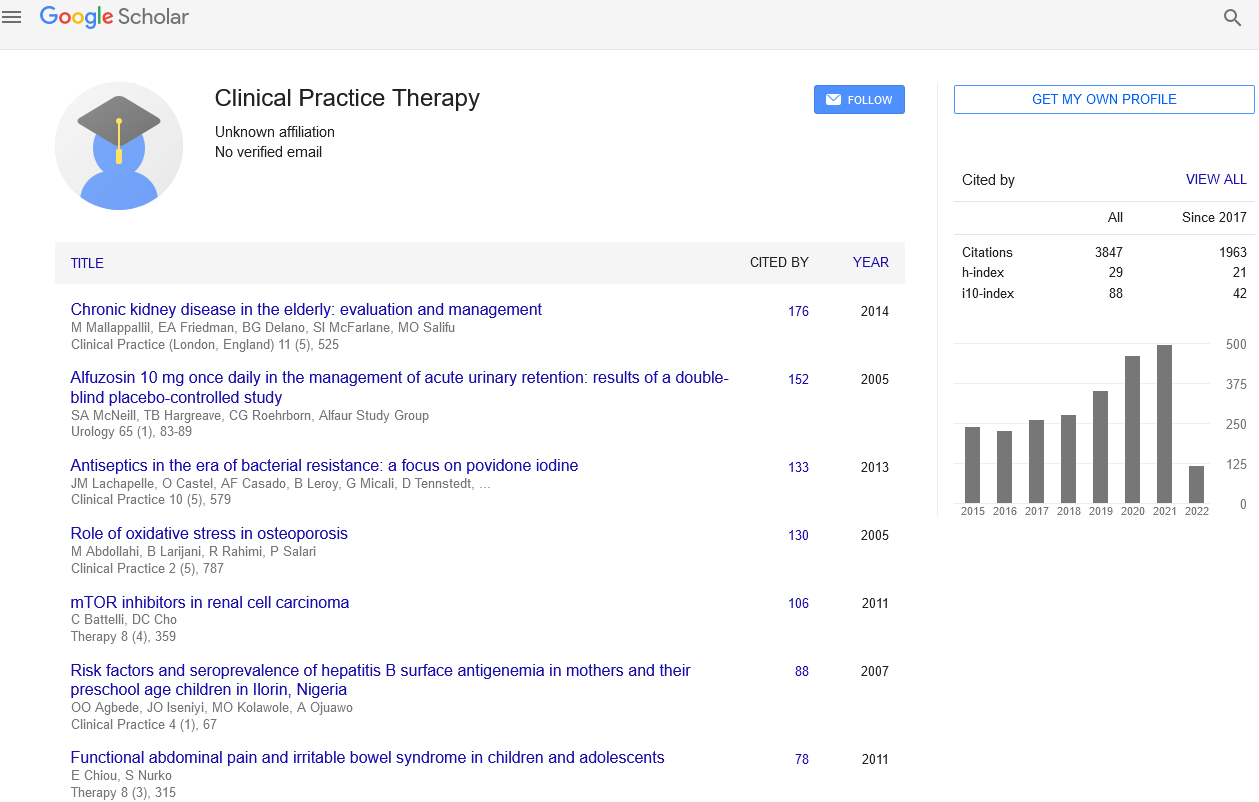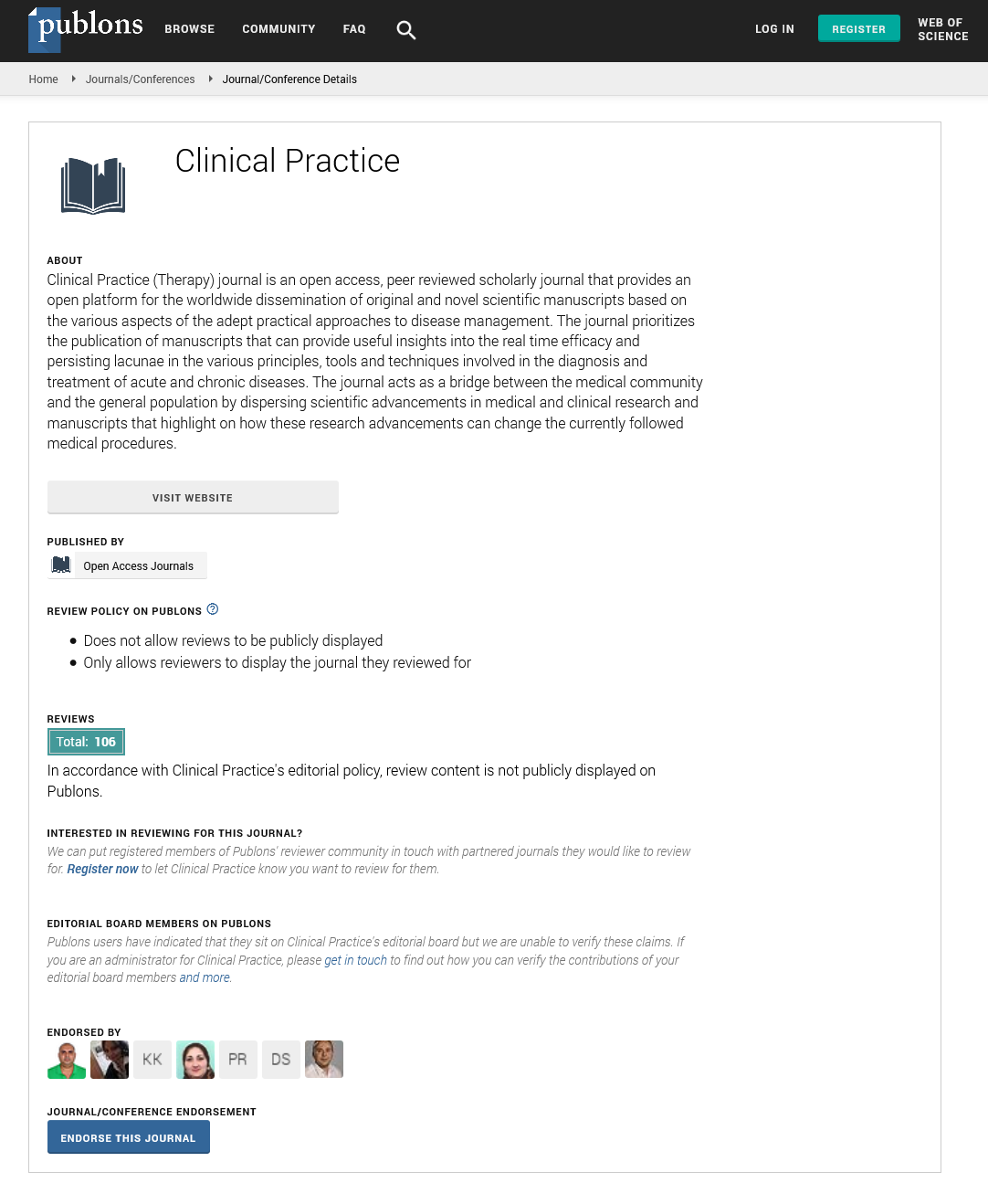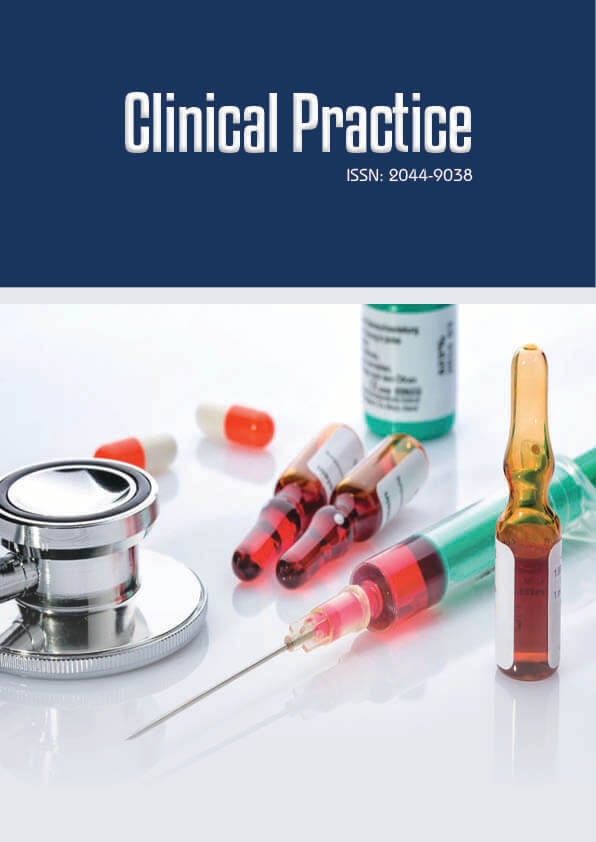Perspective - Clinical Practice (2025) Volume 22, Issue 1
Clinical Observations of Unilateral Reexpansion Pulmonary Edema: A Critical Review
Seemin Shiraz*
Department of Intensive Care Unit of Mediclinic Parkview Hospital, UAE
- *Corresponding Author:
- Seemin Shiraz
Department of Intensive Care Unit of Mediclinic Parkview Hospital, UAE
E-mail: shiraz@mediclinic.ae
Received: 01-Mar-2025, Manuscript No. fmcp- 25-158679; Editor assigned: 03-Mar-2025, Pre-QC No. fmcp-25-158679 (PQ); Reviewed: 17-Mar-2025, QC No. fmcp-25-158679; Revised: 21-Mar-2025, Manuscript No. fmcp- 25-158679 (R); Published: 28-Mar-2025, DOI: 10.37532/2044-9038.2025.22(1).1-3
Abstract
Unilateral reexpansion pulmonary edema (URPE) is a rare but significant complication that can occur following the re-expansion of a collapsed lung, typically after thoracentesis, pleural drainage, or pneumothorax treatment. This article aims to provide an overview of the clinical observations related to URPE, exploring its pathophysiology, clinical presentation, management strategies, and potential outcomes. Despite its rarity, URPE remains a challenging condition, and understanding its underlying mechanisms and optimal treatment approaches is essential for clinicians. We also discuss preventive measures and the importance of early recognition in reducing complications and improving patient prognosis.
Keywords
Unilateral reexpansion pulmonary edema • URPE • Thoracentesis • Pneumothorax • Pleural drainage • Pulmonary edema • Lung re-expansion • Clinical management
Introduction
Unilateral reexpansion pulmonary edema (URPE) is an uncommon but serious condition that may develop after the re-expansion of a collapsed lung. Typically occurring following procedures such as thoracentesis, pleural drainage, or management of spontaneous pneumothorax, URPE is a clinical complication that can significantly affect a patient’s prognosis if not managed promptly and appropriately. Despite its low incidence, clinicians need to be aware of this condition as it can lead to severe respiratory distress and, if untreated, potentially life-threatening complications. This article aims to provide a comprehensive review of the clinical observations related to URPE, with a particular focus on pathophysiology, clinical presentation, diagnosis, management, and prevention [1].
Pathophysiology of unilateral reexpansion pulmonary edema
The exact mechanisms underlying URPE remain incompletely understood, but it is generally believed that the rapid re-expansion of a collapsed lung leads to increased capillary pressure, disruption of the alveolar-capillary barrier, and the subsequent leakage of fluid into the alveolar spaces. Factors contributing to the development of URPE include:
- Rapid re-expansion of the lung:
- Pulmonary vascular endothelial dysfunction:
- Increased capillary permeability:
The abrupt restoration of normal lung volume following thoracentesis or pleural drainage can lead to a rapid shift in intrapleural pressure, overwhelming the ability of the pulmonary vasculature to cope with the increased blood flow.
In some cases, the re-expansion process can lead to endothelial injury and subsequent vascular permeability, which allows fluid to leak into the alveoli, causing edema.
The sudden increase in lung volume can stress the pulmonary capillaries, leading to an increase in permeability and the development of pulmonary edema. Although URPE is often a self-limiting condition, it can cause significant clinical manifestations and may require urgent medical intervention [2,3].
Clinical presentation
Patients with URPE typically present with sudden onset respiratory distress, following a procedure aimed at re-expanding a collapsed lung. The key clinical signs and symptoms include:
- Rapid onset of dyspnea:
- Hypoxemia:
- Cyanosis:
- Tachypnea and tachycardia:
Often occurring within minutes to hours after the re-expansion procedure, the patient may experience sudden shortness of breath that progressively worsens.
Pulse oximetry will often reveal a drop in oxygen saturation, necessitating supplemental oxygen or more aggressive intervention.
In more severe cases, patients may develop cyanosis due to insufficient oxygenation of the blood.
Increased respiratory rate and heart rate are common as the body attempts to compensate for impaired gas exchange [4].
Chest radiograph findings:
A chest X-ray typically shows diffuse pulmonary edema in the re-expanded lung, without signs of infection, consolidation, or other underlying causes of pulmonary edema. In some cases, patients may also experience mild pleuritic chest pain, which can be attributed to the irritation of the pleura during the re-expansion procedure.
Diagnosis
The diagnosis of URPE is largely clinical and based on the temporal relationship between the lung re-expansion procedure and the onset of symptoms. Key diagnostic steps include:
- Chest Radiography:
- Arterial blood gas (ABG) analysis:
- Exclusion of other causes of pulmonary edema:
A chest X-ray is the first imaging modality used to assess for pulmonary edema. In the case of URPE, it will typically reveal diffuse bilateral or unilateral infiltrates, suggesting fluid accumulation in the alveolar spaces [5,6].
Blood gases can confirm hypoxemia and the severity of respiratory compromise, guiding the need for further management.
It is essential to rule out other potential causes of pulmonary edema, including heart failure, pneumonia, and acute lung injury. This can be done through clinical history, echocardiography, and laboratory investigations.
Management of unilateral reexpansion pulmonary edema
The management of URPE generally involves supportive care, with the goal of reducing the severity of symptoms and improving oxygenation. Specific treatment strategies include:
- Oxygen therapy:
- Fluid management:
- Intensive monitoring:
- Avoiding re-expansion injury:
Supplemental oxygen is typically required to correct hypoxemia. In more severe cases, non-invasive positive pressure ventilation (e.g., CPAP or BiPAP) or invasive mechanical ventilation may be needed [7,8].
Careful management of fluids is essential. Diuretics may be used to help reduce pulmonary edema, although their use should be cautious as patients are at risk of hypotension due to fluid shifts.
Patients should be closely monitored in a hospital setting for any worsening of symptoms. Continuous monitoring of oxygen saturation, respiratory rate, and arterial blood gases is essential.
To prevent further complications, re-expansion of the lung should be performed cautiously, and any interventions that may worsen the edema should be avoided.
Prevention
While URPE remains a complication of lung re-expansion procedures, there are several strategies to minimize its risk:
- Gradual re-expansion:
- Proper technique:
- Use of steroids:
In cases of large pneumothorax or pleural effusion, slow and controlled re-expansion of the lung may reduce the likelihood of causing a significant pressure shift [9,10].
Adequate technique during thoracentesis, pleural drainage, or pneumothorax management, including appropriate needle placement and careful monitoring, can minimize the risk of re-expansion pulmonary edema.
Some studies have suggested that corticosteroids may help reduce the inflammatory response following lung re-expansion, potentially reducing the risk of developing edema.
Conclusion
Unilateral reexpansion pulmonary edema is a rare but potentially severe complication that can arise after lung re-expansion procedures. Clinicians should be vigilant in recognizing the early signs of URPE and manage patients with supportive measures to optimize outcomes. Prevention through careful technique and gradual re-expansion, alongside early intervention, remains key in minimizing the impact of this condition. While the pathophysiology of URPE is still being explored, understanding its clinical features and timely management strategies will help clinicians improve patient care and reduce the morbidity associated with this complication.
References
- Fagugli P, Patera F, Battistoni S et al. Six-year single-center survey on AKI requiring renal replacement therapy: epidemiology and health care organization aspects. J Nephrol. 28, 339-349 (2015).
- Yokota LG, Sampaio BM, Rocha E et al. Acute kidney injury in elderly intensive care patients from a developing country: clinical features and outcome. Int J Nephrol Renovasc Dis. 10, 27-33 (2017).
- AlSawaftah N, Pitt WG, Husseini GA et al. Dual-Targeting and Stimuli-Triggered Liposomal Drug Delivery in Cancer Treatment. ACS Pharmacol Transl Sci. 4, 1028-1049 (2021).
- Rodrigues FB.Endovascualar treatment versus medical care alone for ischemic stroke: a systemic review and meta-analysis. BMJ. 57, 749-757 (2016).
- Jackson, Peter. The multiple ontologies of freshness in the UK and Portuguese agri food sectors. Trans Inst Br Geogr. 44, 79-93 (2019).
- Salinet ASM. Do acute stroke patients develop hypocapnia? A systematic review and meta-analysis. J Neurol Sci. 15, 1005-1010 (2019).
- Lewis RJ, Dutertre S, Vetter I et al. Conus venom peptide pharmacology. Pharmacological Reviews. 64, 259-98 (2012).
- Sankarasubbaiyan S, Janardan JD, Kaur P et al. Outcomes and characteristics of intermittent hemodialysis for acute kidney injury in an intensive care unit. Indian J Nephrol. 23, 30-33 (2013).
- Sharma NK, Das SK, Mondal AK et al. Endoplasmic reticulum stress markers are associated with obesity in nondiabetic subjects. J Clin Endocr. 93, 4532-4541 (2008).
- Zoccali C. Traditional and emerging cardiovascular and renal risk factors: an epidemiologic perspective. Kidney Int. 70, 26-33 (2006).



